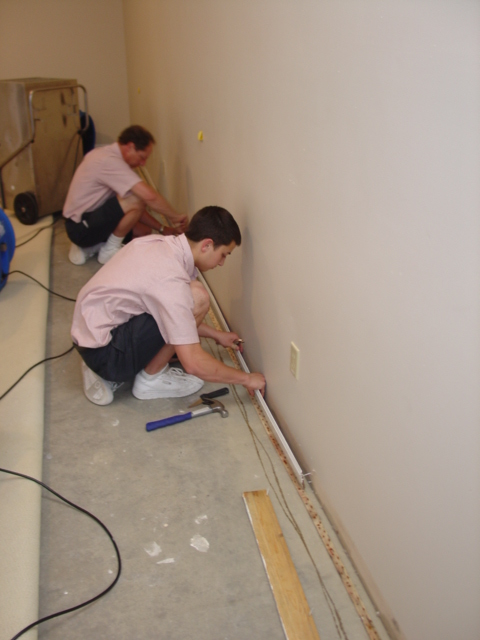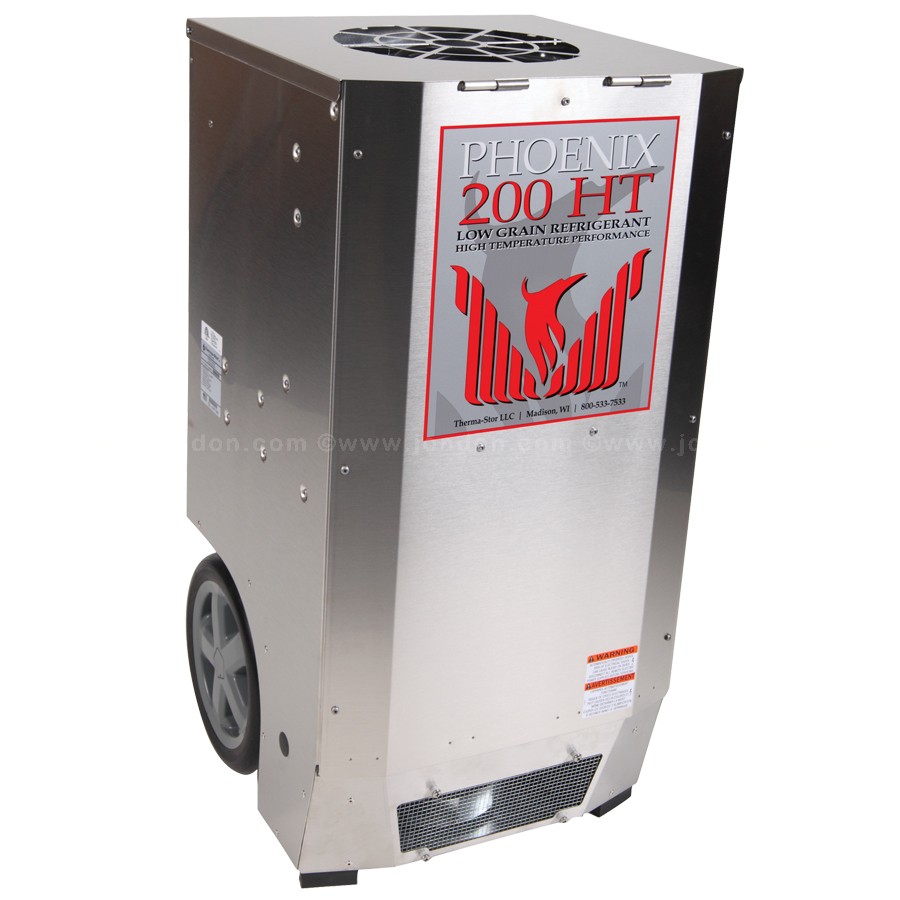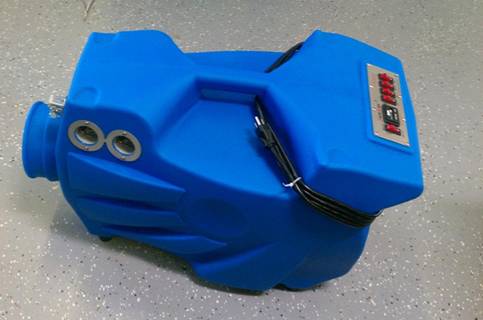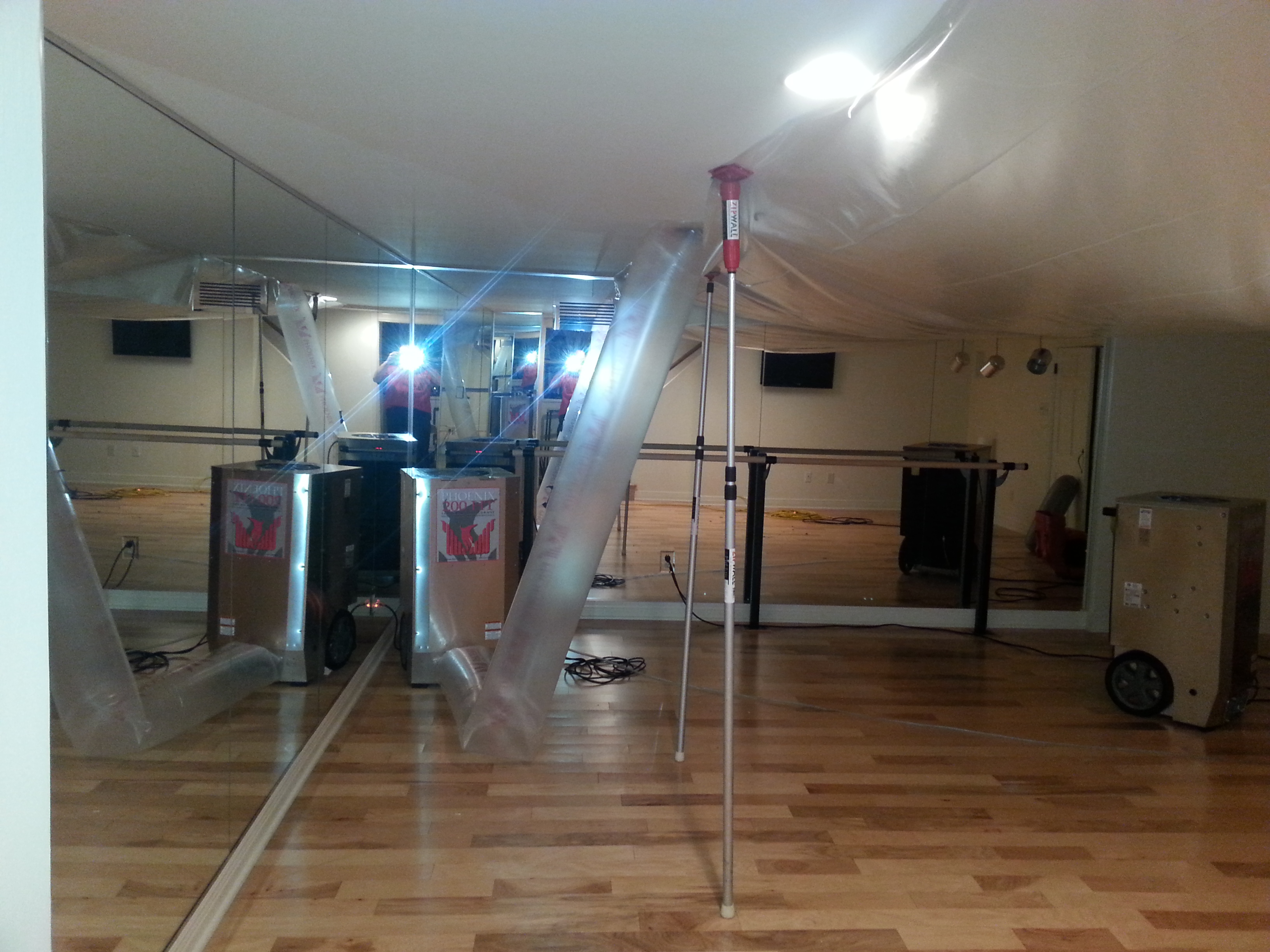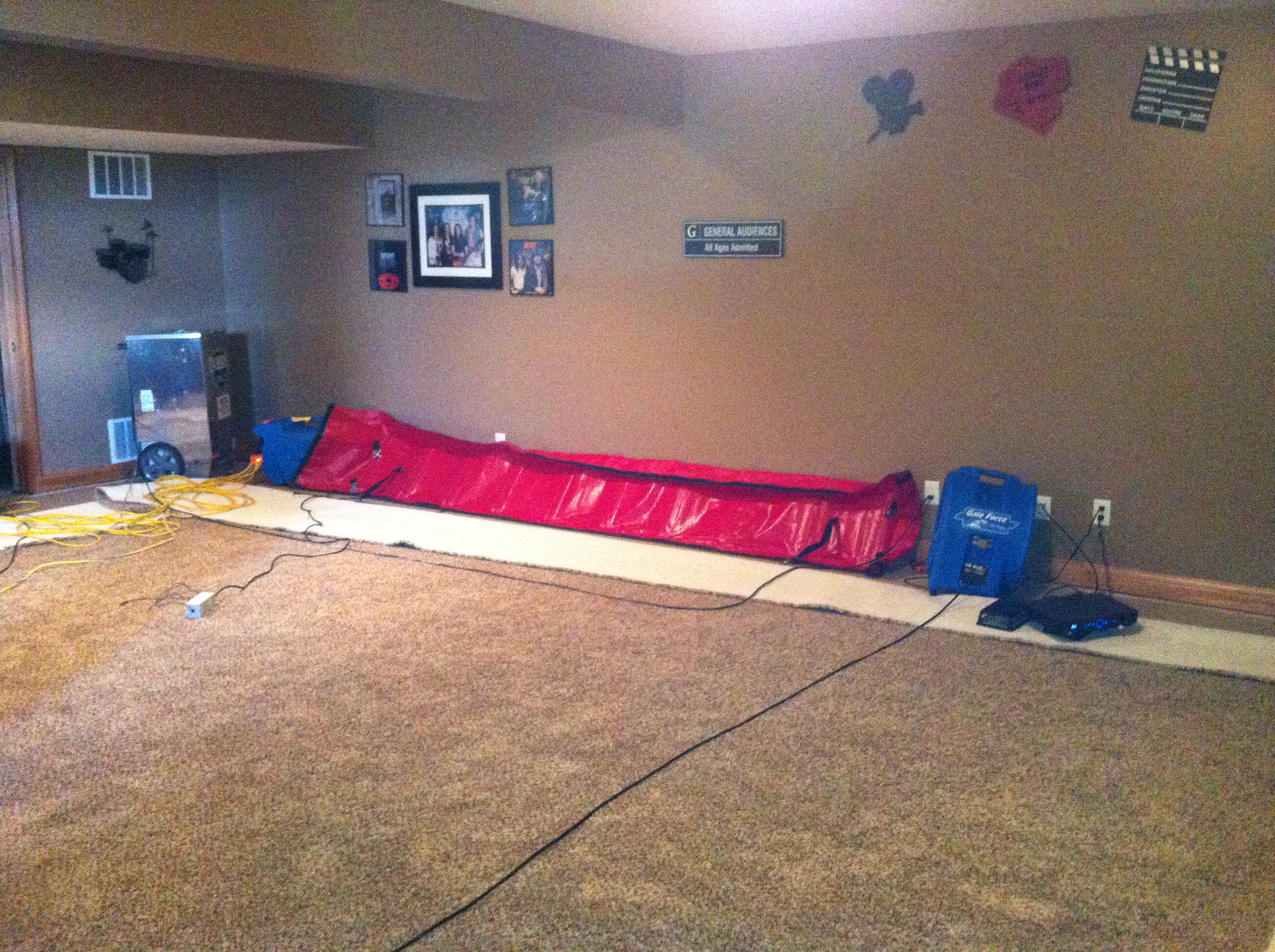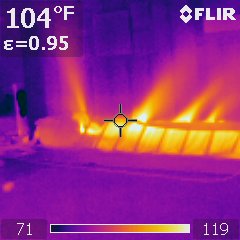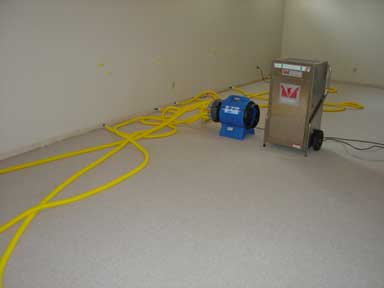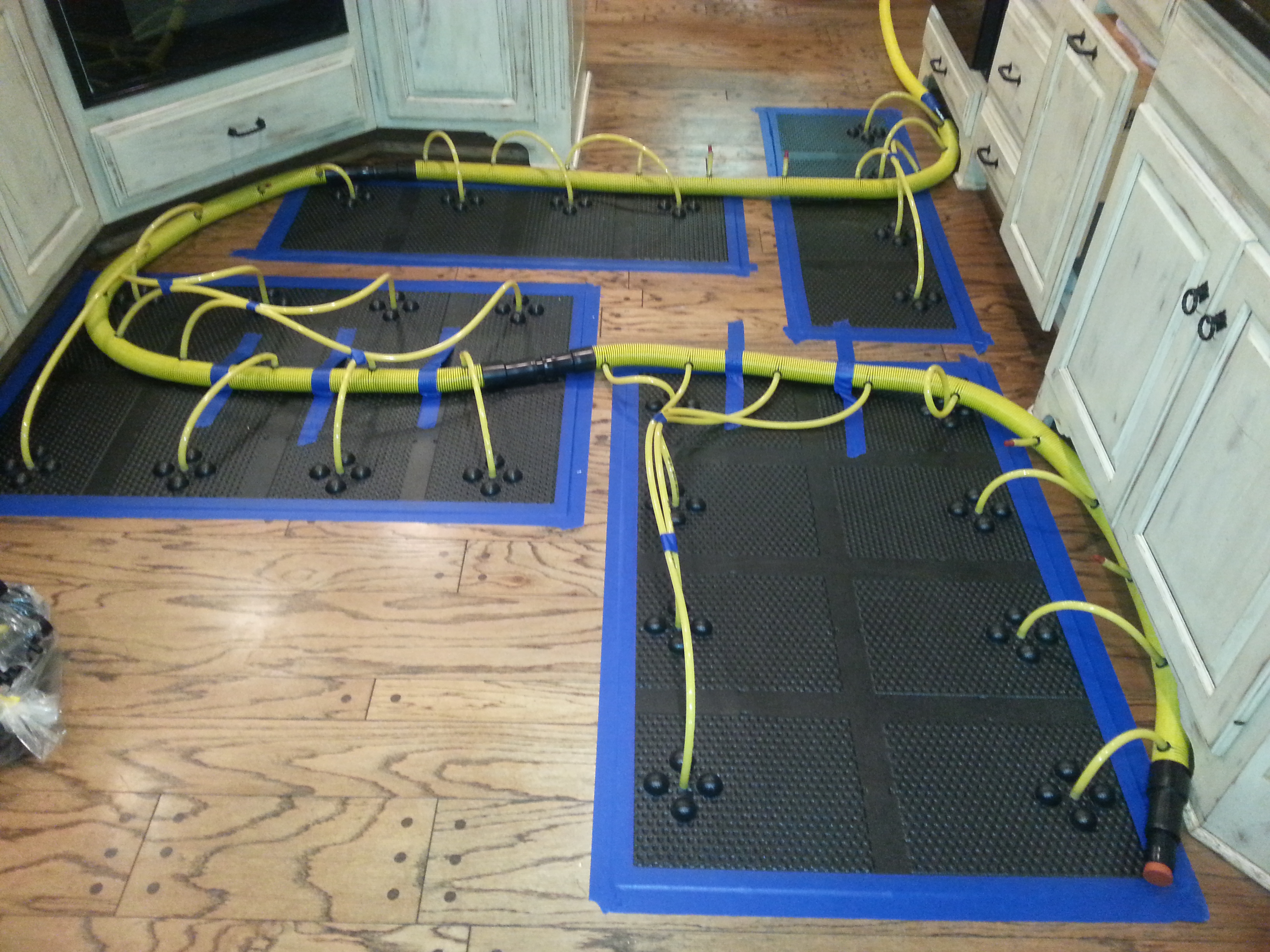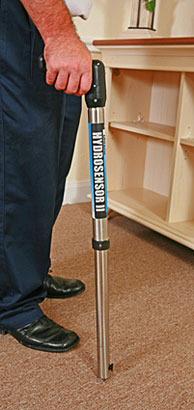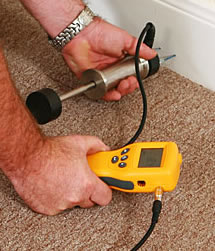Water Damage Restoration Process
There are many steps involved in restoring water damage, listed here is the restoration process of Referral Cleaning & Restoration. Depending on the severity of the damage, amount of time passes and source of the water, will make a difference in how the damage is handled. Some of the steps below may or may not be needed. If you have water damage in Fort Wayne, Call Referral Cleaning & Restoration at 260-483-4383 and our certified, experienced technicians will inspect your home and give you recommendations.
1.) Inspection
A thorough inspection of the property includes determining the exact cause of the loss and verifies that repairs have been made to eliminate the source of water.
This inspection includes categorizing the water loss as: Clear, Grey or Black water, and then after extraction, determining the classification of the water loss to choose the right drying procedures. This inspection includes photo documentation and a thermographic investigation to find hidden moisture sources. We then define the affected areas with the use of moisture detection equipment. Our technicians record initial moisture readings that will be monitored on subsequent visits. This helps track the progress of our drying efforts. Your job’s drying progress is managed and monitored everyday. Inspection tools such as our thermal imaging camera, penetrating and non penetrating moisture detection meters allow us to detect every drop of water, determine the extent of the damage and monitor the drying environment to maintain a proper balance of temperature and humidity to dry things as quickly as possible and therefore prevent mold and microbial growth. We use all our moisture meter readings and the science of Psychrometry to determine the optimum set of air drying conditions, and equipment needed to dry the structure ASAP. Psychrometry is the science that takes into account the relationships of temperature, humidity, air movement, and time and their effect on various structural materials.
2.) Water Extraction
Water can ONLY be removed in 2 ways: Extraction and Evaporation. It is 1200 times easier to physically remove the water than to evaporate it with fans and dehumidifiers alone. (Source: Extraction Essentials For Restorative Drying – Cleanfax Magazine Oct 2011) THE MOST important step is a THOROUGH extraction using the best tools and extraction equipment.
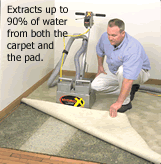
Water extraction is performed with our powerful PTO (power take off) direct drive truck-mounted extraction is performed with our powerful PTO (power take off) direct drive truck-mounted extraction units to remove water from the flooded area. The Hydro-X Xtreme Xtractor is a self propelled, weight assisted extractor that removes water from the carpet and more importantly the PAD. A regular carpet wand will NOT remove water from the pad. Depending on the source of the water damage and type of pad we may be able to extract the water without pulling up your carpet and removing the pad. This allows us to complete the water damage restoration quicker and return your home and life back to normal as soon as possible.
3.) Removing Unsalvageable Wet Carpet & Pad
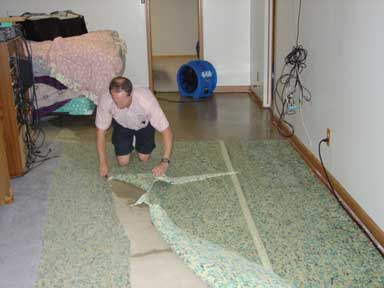 The carpet and / or pad may need to be removed and discarded if the water was unsanitary, the pad has a moisture barrier, the carpet is delaminated or the carpet has been permanently stained from furniture wood stain or color has transferred from rugs or art.
The carpet and / or pad may need to be removed and discarded if the water was unsanitary, the pad has a moisture barrier, the carpet is delaminated or the carpet has been permanently stained from furniture wood stain or color has transferred from rugs or art.
4.) Removing Baseboards
The depth of the water in the affected area is a major factor in deciding if baseboards will be removed. It the water was deeper than 2 inches the insulation inside the wall may be wet. If so the baseboards need to be removed carefully. Then slots/holes can be made behind the baseboards in the drywall so hot, dry air can dry the insulation. When drying is completed the baseboards can be reattached.
5.) Protecting Furniture and Contents
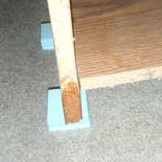
We will move your furniture and contents to a safe area. Then if necessary we place blocks and tabs under the furniture legs to raise it off the floor. This will allow airflow to dry the furniture and prevent the stain on wood legs from bleeding and metal objects from rusting on the carpet. Interior doors will be removed, labeled and moved to an unaffected area. If you have belongings that were affected we will help you sort through what’s salvageable and what’s not.
6.) Containment
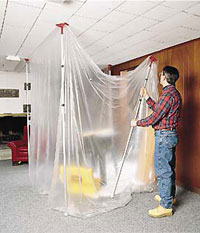
The water damaged area is isolated to create a drying chamber. By isolating the affected area we can focus our efforts on a single controlled environment. This can be achieved by closing a door or using plastic sheeting to create a partition thereby increasing the efficiency of our equipment and reducing drying time.
7.) Disinfect
If necessary a disinfectant is applied to affected surfaces. Some restoration companies use disinfectants that get the job done but can be hazardous/toxic. Referral Cleaning & Restoration uses Benefect® so you can rest assured that your home is clean and disinfected but also safe for you, your family and the environment.
Benefect’s Botanical Disinfectant™ disinfects any hard, non-porous surface such as contaminated water damaged construction materials. It also controls & inhibits odor causing water-born bacteria, mold & other odor causing organisms on a variety of porous and semi-porous materials including: wood studding, sub floors, trim, lumber, tack strips, concrete and paneling. Also suitable for deodorizing such surfaces as carpeting, carpet under-pad and other semi-porous furnishings.
How can Benefect® disinfect, yet be less toxic than vinegar? 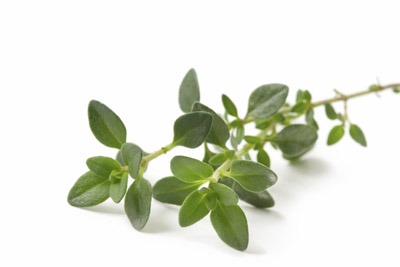 The Active Ingredient is the highly specialized Thyme Oil that has been specially grown & blended to exact specifications. In nature, plants produce germ-killing ‘essential oils’ to protect themselves from invading microbes, similar to how our bodies produce antibodies for our protection. Benefect® is a revolutionary blend of these antimicrobial extracts, particularly from the herb Thyme, and achieves remarkable efficacy …without using any traditional synthetic chemicals. To put it simply, Benefect is a ‘plant immune system’ in a bottle. Over 5,000 years of history shows that microbes do not build up a tolerance or resistance to the antimicrobial action of essential oils. The concentrations of essential oils required to kill microbes have not changed during this entire period. On the other hand, current germ killing practices have lead to highly resistant organisms, which require stronger, more toxic chemicals and increasingly complicated disinfecting procedures…in just 60 years.
The Active Ingredient is the highly specialized Thyme Oil that has been specially grown & blended to exact specifications. In nature, plants produce germ-killing ‘essential oils’ to protect themselves from invading microbes, similar to how our bodies produce antibodies for our protection. Benefect® is a revolutionary blend of these antimicrobial extracts, particularly from the herb Thyme, and achieves remarkable efficacy …without using any traditional synthetic chemicals. To put it simply, Benefect is a ‘plant immune system’ in a bottle. Over 5,000 years of history shows that microbes do not build up a tolerance or resistance to the antimicrobial action of essential oils. The concentrations of essential oils required to kill microbes have not changed during this entire period. On the other hand, current germ killing practices have lead to highly resistant organisms, which require stronger, more toxic chemicals and increasingly complicated disinfecting procedures…in just 60 years.
Benefect’s® groundbreaking botanical technology is proven to kill over 99.99% of bacteria & surpasses the U.S. Environmental Protection Agency’s efficacy requirements for broad spectrum hospital disinfectants.
Benefect® is an approved product for use on carpet and will not void your warranty. Many commonly used cationic antimicrobial products will void your warranty when applied to carpet. Let us explain. A detergent may be cationic (positively charged) or anionic (negatively charged). Cationic detergents in many antimicrobial’s are better at inactivating bacteria than anionic detergents. One commonly used type of cationic detergent disinfectant is a quaternary ammonium compound or QUAT. A QUAT is a cationic detergent compound derived from ammonia by replacing the hydrogen atoms with organic radicals, and the compound is especially important as surface-active agents or disinfectants. Benefect is nonionic and therefore will not void your carpet warranty.
8.) Air Scrubbing
Air Scrubbers are installed to catch particulate matter that may be stirred from the air movement. The Phoenix Guardian HEPA System performs several critical air quality remediation functions simultaneously because its HEPA filter captures virtually all removable airborne particles. Click HERE for DriEaz’s 16-page Guide to Air Scrubbing for a summary of the air scrubber’s overall role in restorative drying.
9.) Drying
Referral does not unnecessarily tear out and replace costly materials that can be dried. This saves you money and returns your life back to normal in days instead of weeks or even months. To accomplish this Referral has specialized drying equipment.
Figure A.) Low Grain Refrigerant Dehumidifiers: Remove moisture from the air.
Figure B.) Axial Air Movers: Circulate high volumes of air, speeding up drying.
Figure C.) Laminar Air Movers: See Figure B.
Figure D.) Electric Heaters: Speed up the evaporation process.
Figure E.) Pressurized Heated Drying System: Used to dry walls and cabinets.
Learn more about the role of heat in drying: Dry Faster With Energy.php and Increase Drying Procedures With Number Crunching.pdf.
10.) Monitoring
We will return daily to monitor the drying progress. Using our moisture meters we will check on the drying progress, record drying conditions and rearrange drying equipment. Thermo Hygrometers (Figure A) are essential tools in the assessment of water damage scenarios. The thermal hygrometer is used to measure specific qualities of the air inside and outside the structure. These devices measure temperature and relative humidity. From that data they calculate dew point temperature, vapor pressure, and specific humidity. The measurement of these items is crucial in establishing baseline environmental conditions as well as monitoring the progress of the alteration of this environment to establish optimal environmental drying conditions. Thermal Imaging (Figure B) is a quick way to assess the water damaged areas 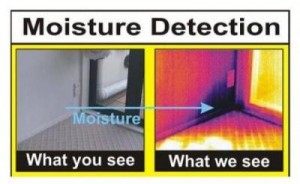 and is a photographic means to document the actual building components impacted by the flood water. Infrared imaging devices use infrared thermometers capable of reading surface temperatures without contact via measurement of infrared light, which varies with temperature. When most matter changes states, e.g. liquid to gas as water to water vapor, it release energy, in this case heat energy. This leaves the wet surface cooler. A Non-Destructive Moisture Measurement (Figure C) uses a deep 1″ signal to penetrate and detect excess moisture in the substrate under a range of covering materials such as drywall, wall coverings, ceramic tiles, PVC and CPT tiles, carpet and most building materials, without having to damage or make holes. Non-penetrating moisture meters simply shoot a radio frequency signal into the item being measured without penetration. Some also use a set of conductive pads for transmission of electrical current through the material. The radio or electrical transmission conductivity is measured and the moisture is ultimately calculated through the capacitance or resistance. Moisture Meters (Figure D) are used to measure the moisture content of a material’s surface or at incremental depths. The meter can measure the amount of moisture on a material by its electrical conductivity. This is often regarded as a more repeatable and accurate type of moisture measurement. The moisture probe checks both the carpet and pad for moisture. Moisture can travel much farther than may be initially visible. The Hammer Probe (Figure E) utilizes a slide hammer to push two teflon insulated pins deep into water damaged sub flooring, wood flooring, wood framing, timbers, and other items requiring deep readings. Insulation pins allow the technician to reach deeper areas such as insulated wall cavities or under cabinets. The sides of these pins are insulated so the reading is taken only at the tips.
and is a photographic means to document the actual building components impacted by the flood water. Infrared imaging devices use infrared thermometers capable of reading surface temperatures without contact via measurement of infrared light, which varies with temperature. When most matter changes states, e.g. liquid to gas as water to water vapor, it release energy, in this case heat energy. This leaves the wet surface cooler. A Non-Destructive Moisture Measurement (Figure C) uses a deep 1″ signal to penetrate and detect excess moisture in the substrate under a range of covering materials such as drywall, wall coverings, ceramic tiles, PVC and CPT tiles, carpet and most building materials, without having to damage or make holes. Non-penetrating moisture meters simply shoot a radio frequency signal into the item being measured without penetration. Some also use a set of conductive pads for transmission of electrical current through the material. The radio or electrical transmission conductivity is measured and the moisture is ultimately calculated through the capacitance or resistance. Moisture Meters (Figure D) are used to measure the moisture content of a material’s surface or at incremental depths. The meter can measure the amount of moisture on a material by its electrical conductivity. This is often regarded as a more repeatable and accurate type of moisture measurement. The moisture probe checks both the carpet and pad for moisture. Moisture can travel much farther than may be initially visible. The Hammer Probe (Figure E) utilizes a slide hammer to push two teflon insulated pins deep into water damaged sub flooring, wood flooring, wood framing, timbers, and other items requiring deep readings. Insulation pins allow the technician to reach deeper areas such as insulated wall cavities or under cabinets. The sides of these pins are insulated so the reading is taken only at the tips.
11.) Reinstallation / Repairs
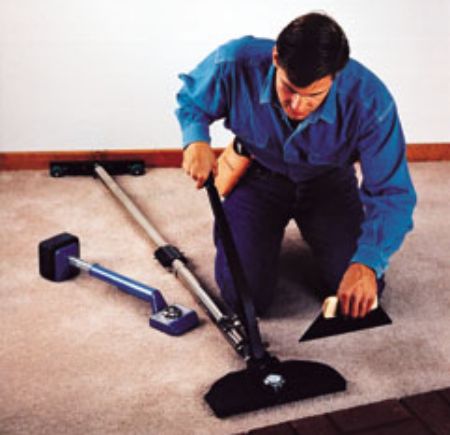
If the carpet or pad was removed, new will be reinstalled. Necessary drywall, trim or painting repairs are also made at this time.
12.) Carpet Cleaning & Replacing Furniture
 This Water Damaged Carpet Had A Brown Water Damage Stain. Referral Was Able To Remove It And Save The Carpet!
This Water Damaged Carpet Had A Brown Water Damage Stain. Referral Was Able To Remove It And Save The Carpet!
Referral’s unique carpet cleaning system restores a water damaged carpet. The Hot Water Extraction method removes water stains, rust, germs, dirt, dust, etc. leaving your home clean, fresh and healthy.
13.) Invoicing
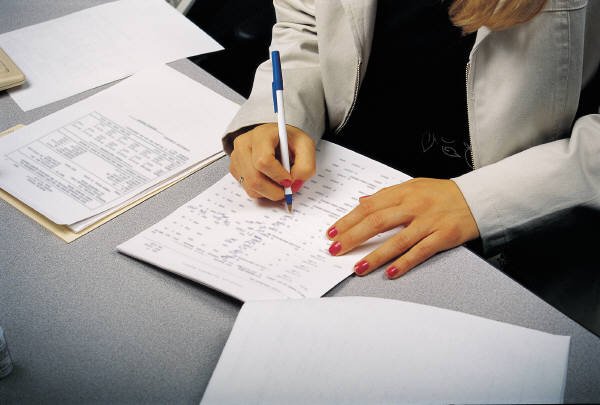
During initial inspection of water damage it is often difficult to give an accurate estimate because of the many variables involved in water damage restoration. We keep accurate records then when work is completed a detailed, itemized invoice will be submitted. We will include any digital or thermal images taken before, during and after the project. A record of drying conditions will include temperature, humidity and grains of moisture. If your water damage is an insurance claim, we can help you and your agent / adjuster with the insurance claims process.

